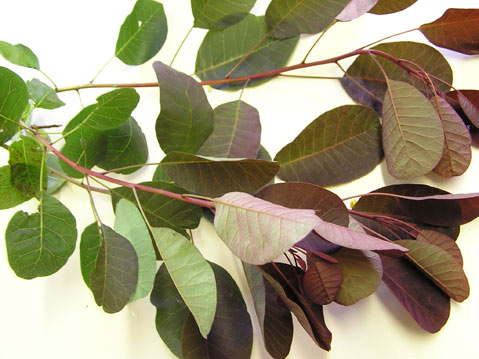New Roots
Propagating Plants with Stem Cuttings

For centuries, professionals and grandmothers alike (granddads, too) have capitalized on the ability of many, if not most, plants to form new roots from their aerial parts. Called adventitious roots, they may aid the mother plant in propagating its species or just be an offshoot of other chemically induced growth processes occurring in leaves and stems.
Probably the best-known method of propagating plants is by taking
stem cuttings. There are several types to consider, from softwood to semi-softwood to hardwood cuttings. These terms will seem fairly self-explanatory, and they are, but there is also a logic in considering them that has to do with the time of year and stage in the growth cycle of the plant. Here’s a brief primer: Softwood cuttings are generally taken from spring through late summer (always species-dependent, of course). The branchlets should snap when bent sharply, not bend or tear. Semi-hardwood cuttings may be taken a little later in the season but are also from shoots that have only recently grown. They should still be succulent and break crisply when bent. Hardwood cuttings are taken during the dormant season and will require a much longer time to root and an undisturbed situation in which to accomplish this; they’re slightly more of a challenge for home gardeners, but not to be overlooked if a valuable specimen needs to be multiplied.
Here’s how easy it is. Cut young branches with several growth nodes (where a leaf or flower shoot has or will arise) from the tips of the plant, dip them in a commercially available rooting compound (formulated from plant hormones that stimulate root production), put them in pots, flats, or whatever is handy that has been filled with planting mix — and wait. Of course, there are some subtleties to consider. Remember that these little cuttings have just been severed from their source of food and water. Remove a few of the leaves or some part of the leaves (cut one third to one half of them off cleanly) to reduce evapotranspiration stress. Keeping the tops of the plants moist will also help with this trauma. Don’t try to keep the soil saturated (however, don’t let it dry out either), but rather create a greenhouse atmosphere with frequent misting or by simply enclosing the plant in a plastic bag after hydrating it. Open the bag every day or two for a few minutes to regulate levels of carbon dioxide and oxygen that are part of the normal gas exchange. Place in a bright, warm, but not hot, spot.
Many plants can be started by this method quite easily. Succulents are among the easiest. Plants like jade plant (Crassula argentea), Aeonium species, and hens and chickens (Echeveria species) and their ilk will root with almost no effort. Take some cuttings, let them dry out for a couple of days so that their soft tissues have a chance to form a tough barrier against fungal spores, slip them into a pot of coarse mix, and they will continue to grow without interruption. That overgrown weeping fig tree (Ficus benjamina) towering in the corner of the office can also easily be propagated using this method. Other easy candidates include begonia, coleus, and pelargonium. Equally successful will be cuttings of woodier shrubs such as butterfly bush (Buddleia davidii and its cultivars), smoke tree (Cotinus coggygria), vines like trumpet vine (Campsis radicans), and jasmine (Jasminum nitidum and others). Check a book on propagation for tables and lists of others.



